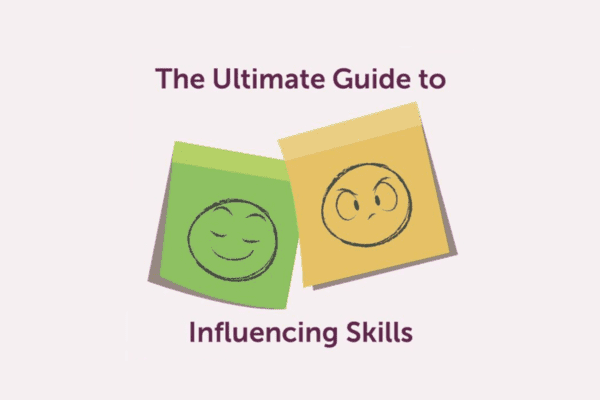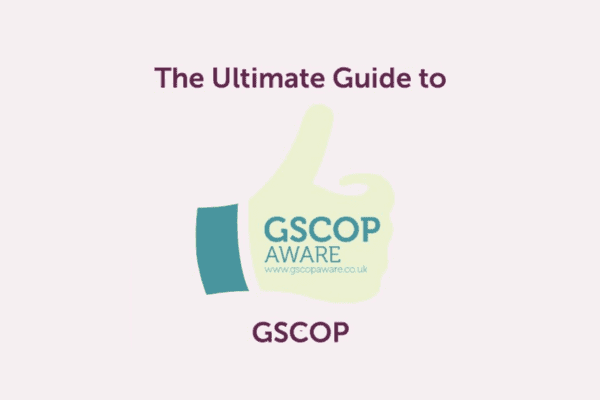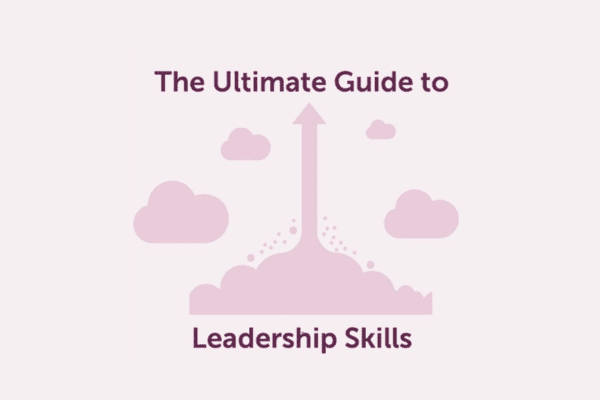What are Presentation Skills?
In understanding presentation skills, one must first understand presenting. Simply put, presenting is communicating to an audience in order to deliver a message. It can take many different forms. It could be at school or university. Perhaps, it’s a speech at a wedding or a special event. Typically, however, we associate presentations with work.
For most people, the thought of talking in front of a group of people, regardless of the reason, makes us scared. We know, however, that we need this essential communication skill. It helps us lead people, get a promotion or just get our point across. So how do we develop this skill?
The most powerful person in the room is the one who can effectively communicate their ideas.”
– Barack Obama
Read on to learn how to give a good presentation.
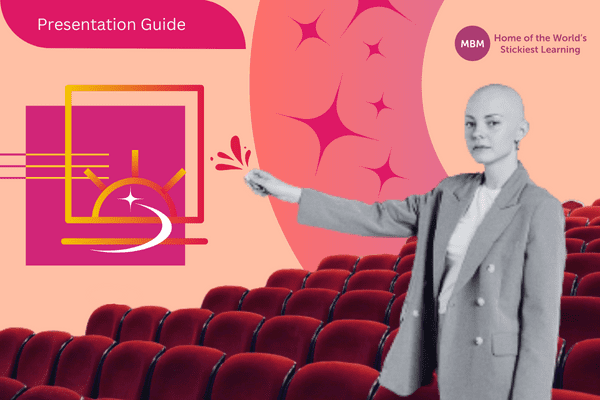
This Ultimate Guide will Cover:
- What are Presentation Skills? (Above)
- What is the Difference Between Public Speaking and Presenting?
- How to Overcome Your Fear of Presenting
- What are Good Presentation Skills?
- How Do I Create a Powerful Presentation?
- What Medium Should You Use?
- What Makes an Effective Presentation?
- How to Improve Your Skills in Presenting
- The Top Five Tips for Presenting
- Further Reading and Resources
2) What is the Difference Between Public Speaking and Presenting?
To start, let’s understand how each is defined:
Presentation:
‘A speech or talk in which a new product, idea, or piece of work is shown and explained to an audience.’
Public Speaking:
‘The art or process of making a speech in public using effective oral communication with an audience.’
Looking at both definitions you can see clear similarities. In short, the core of what they are is the same. They require similar skills to enable communication with others.
Public speaking uses a more general set of communication skills and is a very important skill for anyone to have.
Skills for effective presenting are more specific to get a point across. It’s often linking the talking to a medium and having a measured outcome. However, both are about successfully talking in front of an audience. Both come down to who is giving the message, what the message is, who the audience is, what medium supports it and what impact our message has.
Watch our video to learn more.
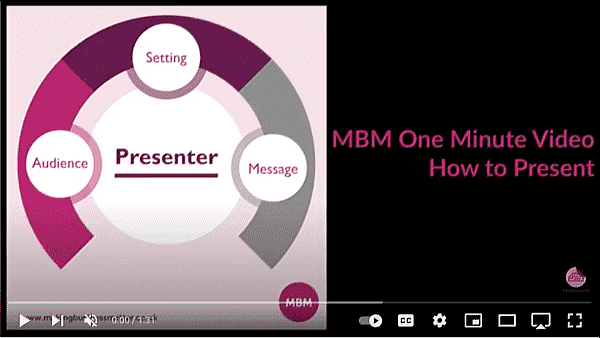
What is the Importance of Presentation Skills?
Already, we have mentioned a number of times that you might need to talk in front of a group of people. Be it work or social, we have a need to be able to get our point across to be successful. If we are good at public speaking we can build a strong reputation, and improve our self-confidence. It will even open up more opportunities for us. This is something everyone wants.
In order to learn how to give a good presentation, we need to understand the key differences between ‘personal presentation’ and ‘presentation skills’.
The Difference Between Personal and Presentation Skills?
Typically, skills in presenting are limited to those times you know you are in the ‘limelight’. That is, you have been asked to give a presentation, run a meeting or train a group of staff.
Personal Presentation, however, is all the other times you need to speak out in front of a group and would be less prepared. This might be in a meeting you are attending or something as simple as a work lunch. Your personal skills in presenting include your voice, body language and what you say. Your ability to think on your feet, say what you actually mean and get a point across.
Both of these are core life skills that make you more adaptable.
See an overview of 7 ways to start a presentation below. Click the image below for a higher resolution.
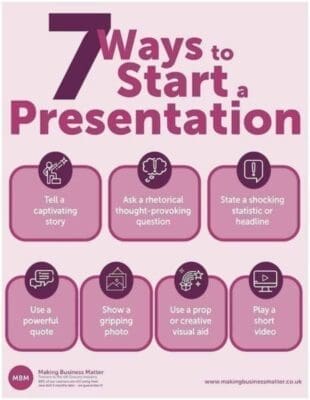
3) How to Overcome Your Fear of Presenting
A fear of public speaking can be all-consuming for some people. You might freeze completely, feel nauseous or faint when forced into these situations. However, being one of these people doesn’t mean you have to stay one. Once you understand how you feel and shift your attention to what matters, presentations become so much easier.
One of my favourite pieces of wisdom I was told whilst overcoming my own fear of presenting was, ‘How you are feeling isn’t the same as how you are doing’.
We have a tendency to overthink everything particularly when the spotlight is on us. We like to call this the ‘spotlight trap’. Falling into the spotlight trap is easy. We instantly become very self-aware. Each movement we make is over analysed and causes us to move unnaturally or stiffen up altogether.
We need to remember that this presentation is not a performance. It is purely us sharing the knowledge we know with an audience that doesn’t know about it. If we start by keeping that in mind it will become easier. All of the tips we will explore below may feel like common sense. But when you actually apply them they can drastically reduce the fear and make your presentation great.
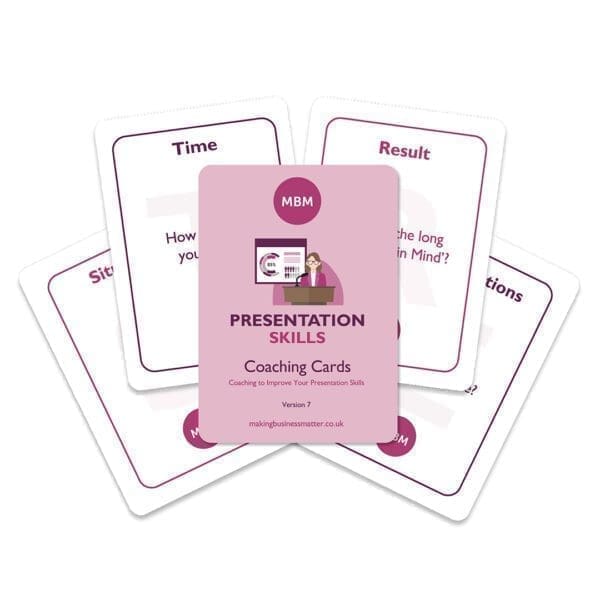
>> Presentation Skills Coaching Cards <<
>> Access on Amazon <<
4) What are the Characteristics of Effective Presentation Skills?
This is an important question to ask and provides a basis for the importance of skills for effective presenting. We know the basics of presenting, but how do we make a good presentation? Also, how can we ensure it is effective?
#1- What is the Purpose of Your Presentation?
This should start with a mind map or a simple set of questions. I like to call this ‘5 Bums on a rugby post’:

As you can see from the image, the rugby post forms an ‘H’. This is for ‘How’. Each of the bums is a ‘W’. These remind us of five open questions, ‘Who’, ‘What’, ‘When’, ‘Where’, ‘Why’. You should think about your presentation by asking these questions.
This is an easy way to remember all the questions you need to answer to be best prepared. Answer each question about your content, context, audience and impact. Examples might be, what is the point of this presentation? When does it need to take place? Where will it happen? How does that limit my media options?
#2- Why is it Important to Have an Objective?
If you are unclear on your own objective it will be very difficult to create a powerful presentation. So make sure you are clear on why you are talking and what the point is that you need to get across. If you can successfully answer those two questions before you start planning, you will have a much better idea of structure. When deciding upon your objective, ensure you are SMART.
When you are doing a presentation it is essential to think about the objective you want to achieve. Are you there to educate and inform the audience? Or, is it more about energising and entertaining them? Depending on the objective, the structure, content and way of presenting will all change dramatically.
#3- Edward de Bono’s Six Thinking Hats
Another method you could use is DeBono’s 6 Thinking Hats. Looking at your decision-making from a range of perspectives will help you think more creatively about your content:
- Red Hat: Look at the situation emotionally. What do your feelings tell you?
- White Hat: Look at the situation objectively. What are the facts?
- Yellow Hat: Use a positive perspective. Which elements of the solution will work?
- Black Hat: Use a negative perspective. Which elements of the solution won’t work?
- Green Hat: Think creatively. What are some alternative ideas?
- Blue Hat: Think broadly. What is the best overall solution?
For more, review our infographic on the 6 thinking hats. Click the image below for a higher resolution.
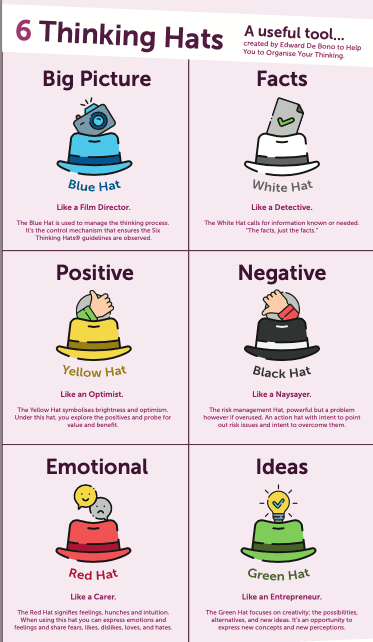
#4- Creating the Order of Presentation
Once you understand the purpose of the presentation it is best to consider the order. A storyboard could come in handy. Have each topic on a post-it note so that you can move them around with ease until the order flows in the most logical way.
#5- Ways to Engage the Audience
Now you need to think about how to grab the audience’s attention from the beginning. Ask yourself, ‘Why have they come to listen to me?’ This is normally a good place to start. Try understanding what might work for your specific audience. Ideas of ways to grab attention are:
1-Interaction:
We mentioned earlier that getting the audience involved is a helpful presentation skill. You could do something simple or you could plan something more elaborate, like a game.
During a training session, a delegate came up with a way to ensure the audience would ask questions. He printed the questions he wanted, placed them in envelopes and stuck them under a few chairs. Then during the presentation, he got them to look under their chairs and those with envelopes needed to ask the question. This immediately got the audience involved and relaxed the whole room. So be creative!
2-Tell a Story:
By starting with words like, ‘imagine’, ‘think of a time’, ‘close your eyes’ or ‘what if’, you are encouraging creativity in people’s minds. Furthermore, you’re making it easier for them to relate to your topic. The story that follows needs to be relevant to the presentation to make this work.
3-Using a Quote:
By quoting someone relevant to the topic, or group, you can add value and depth to your presentation.
There are only two types of speakers in the world. 1. The nervous and 2. Liars.”
– Mark Twain
4-Ask Questions:
Ask direct, or rhetorical questions. Once again this is about activating the brain and involving the audience.
5-Use a Prop or Visual Aid:
Caroline Goyder used an aid very well in her TEDx Talk. It intrigued the audience and made them pay attention to find out what it is. View her 19-minute TEDx talk below:

5) How Do I Create a Powerful Presentation?
When thinking about creating the best presentation it is good to take your ideas and start to structure them well. To create your structure you need to think about the following areas:
- Audience
- Voice and language
- The presenter
- Timing and structure
#1- Audience
When you are planning your presentation, be mindful of the people you will be talking to. Who are they? What age range will they be? Why are they in front of you today? Plus, if they are there voluntarily or mandatory, this may affect their engagement. Think about their demographics (age, gender, literacy or social status) and how that will affect the information they are hearing.
If you don’t consider your audience then your presentation is set to fail before you have even begun. Below are the five different types of audiences to help you consider who you are delivering to:
Types of Audiences:
- The uninformed audience — those present know little about the topic you are presenting. Indeed, they have no preconceived attitude toward the subject. Therefore, you need to inform them so that they understand it.
- The hostile audience — this is an audience that either does not like you or your message. Moreover, they know something about the topic. Therefore, you should talk with a friendly tone and emphasise common ground. Even more, answer objections with facts and logic.
- The apathetic audience — is indifferent or doesn’t care to get involved. You will need to study this audience carefully to determine the source of the indifference and how you can excite them.
- The mixed audience — this is an audience comprised of the informed and the non-informed. Whereas the non-informed may be indifferent about the topic, the informed can either be receptive or hostile. When dealing with this audience, be careful with facts and reach out to their emotion.
- The favourable audience — these are people who support you or your attitude and beliefs. However, do not take them for granted. Reinforce their existing attitudes and make them more grounded with facts.
#2- Voice and Language
When thinking about delivery and the language you use, it is important that you understand if you use colloquialisms, slang, technical speak, buzzwords, and metaphors based on the audience’s level of understanding.
However, you also need to know if you are presenting to a geographically diverse group and need to use a different language or a universal language. If you are speaking in a neutral language that isn’t native to the whole audience consider using more basic words and sentence structures to get your points across clearly.
When you focus on your voice this is looking at your pace, tone, and pitch. Thinking about how you create emphasis on words by using your pausing and volume. To help with this, we can think about the 5 Ps of Presenting:
#3- The 5 Ps for Better Presentation Skills:
Click the image below for a higher resolution.
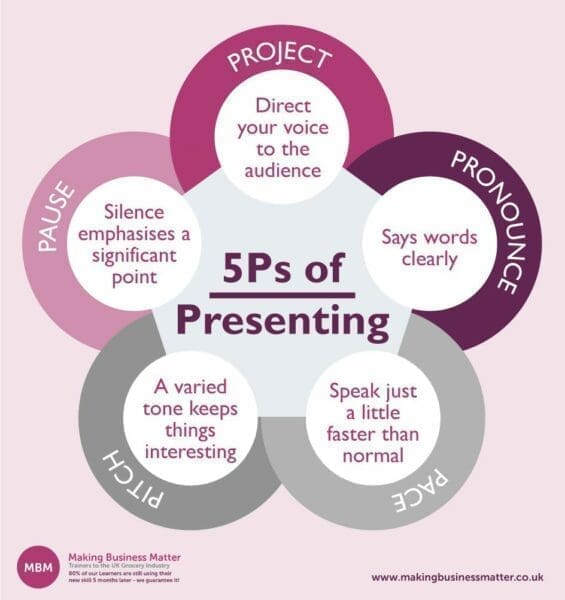
- Project. Whether you have a microphone or not, direct your voice to the audience so that you can be heard clearly. Furthermore, take a deep breath before you begin, so that you have enough air under your voice to project without sounding shaky or tired.
- Pause. Silence is great – do not fear it. It attracts the audience’s attention. Pause often and longer. In fact, it demonstrates confidence. Silence emphasises a significant point and pausing after highlights it. Indeed, a few vocal pauses like ‘uh’ or ‘um’ are okay. However, many of them can annoy. Practice pausing silently to sound thoughtful instead of immature. Presentation expert Anne Miller says: “You do not persuade anyone by speaking constantly, rapidly and louder. You persuade them by saying something poignant and then pausing while they absorb and consider your words”.
- Pitch. Vary your tone to avoid monotony, which might drive the audience to sleep. Speak like you are telling a terrific story to friends. Avoid exaggerated pitches.
- Pace. Don’t speak slowly. Instead, speak slightly faster than your normal speed but never too fast. Indeed, fast speakers lose the audience. Gain common ground with your audience in regard to your speed.
- Pronounce. Say words clearly. Mumbling makes it hard for the audience to understand or follow your message.
#4- The Presenter
When you give a presentation, the first thing the audience will do is decide if they like you based on your appearance. You need to make sure that you are dressed in an appropriate way to suit the audience you are talking to and the environment they are working in.
The second element that is noticed is your overall passion for the topic. Even if you are a bit nervous about your presentation if you have a real passion and a deep understanding of the topic, that will always shine through. Make sure that you are well prepared and that you are really passionate about the topic you are presenting. Furthermore, being able to relate back to personal experience is a sure way to show people your own passion.
Your body language is the last element that people will focus on. This is a telltale sign of the level of nervousness that someone is displaying. If you have the room you should make the best use of it. Moving with purpose can help you master how and when to move. An example of this is to move towards your medium to point at something with emphasis rather than just bobbing around from foot to foot. It can also be walking forward towards the audience or from one side of the room to the other to engage in eye contact with all participants.
#5- Timing
Mastering good time management is essential when developing your skills of presenting. Depending on the type of presentation, you may only have a short window to present and develop your key argument (e.g. sales pitch). Otherwise, you might have a longer slot that you need to make sure you not only fill but also engage the audience throughout.
When you create timings you need to have a little flexibility so that you can adjust depending on audience engagement. If you are talking about something and you can see a loss of interest, you need to be able to move on and shift the focus onto something that grabs their imagination. Think about your transitions from different points. How long does each point need? If you are moving too fast you could lose your audience, but taking too long could have the same effect.
#6- Structure
When structuring your presentation you need to focus on covering the four main areas:
- Introduction – give an overview of the key concepts that you are going to cover.
- The main discussion introduces key concepts – talk about the key points, ideally focusing on 3 sections or points as a maximum.
- Conclusion with a summary – summarise the key concept and your views.
- Questions – open up to questions (if appropriate).
If you focus on these four key areas you should be able to create a structured presentation that is easy to follow and memorable for your audience.
Excuse the Interruption, but Here’s a Little Bit About Us…
We are the soft skills training provider, partnering with clients that are frustrated by people returning from training courses and then doing nothing differently. Our clients choose us because we achieve behavioural change through our unique training method, sticky learning ®.

Find out how to improve skills in presenting with our tailored presentation skills training.
#7- Avoid Common Mistakes
The video below shows some common pitfalls presenters often fall into – 11 errors of presenting:
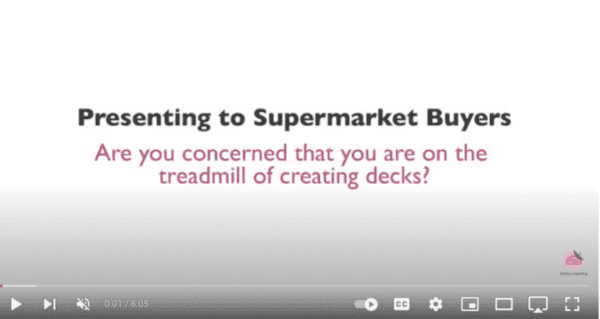
6) What Medium Should You Use?
Now that you have an understanding of your content and methods of audience engagement, you can decide on the medium you will use to support you. So many people make the mistake of creating a PowerPoint before they have considered any of the information above. Now that you know about it, you can see why this is a bad start. We also need to accept that PowerPoint isn’t the only or always the best method of getting your point across.
Let’s look at a few different ways we can support our presentations:
#1- PowerPoint Presentation (Slides)

Let’s start with the favourite. As discussed earlier, we need to consider how we grab our audience’s attention. The likelihood that a slide will do this is slim. Especially when it just has the topic name on it. So why use it?
Nowadays there are a variety of programmes that do similar things, Prezi, SlideRocket, and Emaze to name a few. All of them have similar functions to personalise information in a slide form. They each provide a visual aid that can be displayed as you speak. Furthermore, they all allow you to illustrate key points using a range of graphics and advanced features, such as video and audio. Slides can add value if used correctly.
When to Use Slides:
- If you want to play a video in a seamless way.
- When you want to show a series of information, data or pictures that build on each other.
- If you are in an environment that means you can’t use any other method.
When Not to Use Slides:
- As a starting point, you should be able to introduce yourself and the topic without one.
- If you don’t have access or prior knowledge of the room layout. The reason being it might, for instance, be difficult for people to see.
- If you want your audience to move around with you during the presentation.
Creating a Presentation Using Technology:
- Clean slides are important, don’t over-decorate or fill your slides, otherwise, they are hard to read.
- Use the 6×6 rule – no more than 6 bullet points per slide, with no more than 6 words per bullet point.
- Use images as often as you can. The audience can focus on you rather than read.
- Where are you going to stand? Think about this in advance. Make sure you are visible to everyone in the audience.
- Think about how to move to the next slide. Will you use a clicker? Is your laptop situated close enough so you can change them yourself?
Kawasaki’s 10-20-30 Rule for Presentation Skills:
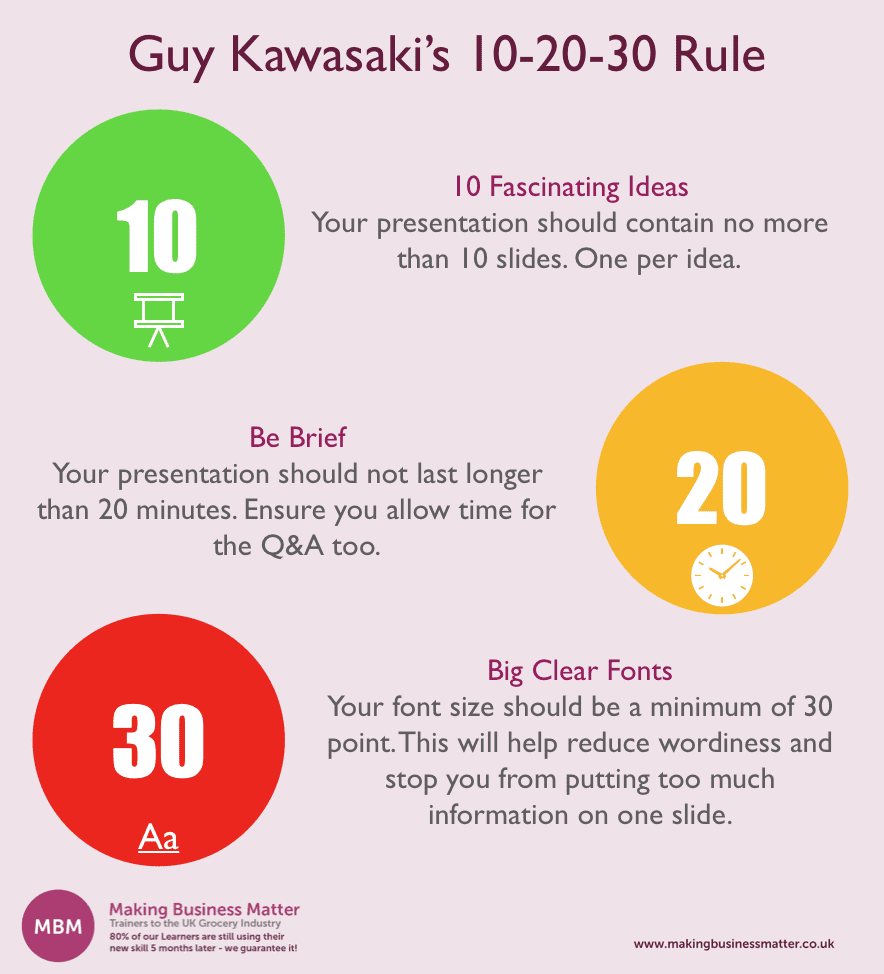
Kawasaki emphasises the importance of being succinct to be able to get your message across. We all suffer death from PowerPoint regularly. Guy Kawasaki, of Apple fame, came up with a helpful and easy-to-remember rule for PowerPoint presentations. The 10-20-30 rule suggests the following for every presentation:
- Contain no more than 10 slides.
- Last no more than 20 minutes.
- Use a font size of no less than 30 points.
Formatting Your Slides:
When you are looking to format the slides you need to keep your audience in mind. You should consider the following:
- Content Organisation – Information chunking – Consider what sections need to go together and then how they flow from one another. If you have a good structure it will help your audience follow the information and understand your presentation.
- Content Relevance and Importance – Ask yourself – is the content on your slides critical to the understanding and visual representation of the information? If the answer is no, then don’t use it. This can confuse the audience and they might lose track while they are trying to make sense of it.
- Content Appropriateness – Consider who your audience is and how the information presented will affect them. If you are delivering at the wrong level, and using inappropriate language or images, you may affect your ability to connect and engage with your audience.
Collaborative Presentation Tools:
Google Slides and Slideshare work in a similar way to PowerPoint or Prezi. However, they provide a greater collaborative way of working. They are mostly free, web-based software that will help you to collaborate in real-time with people all over the world. This can be very useful for projects for international companies or teams. The same rules apply with regard to the slide structure and layout as they do with PowerPoint.
#2- Flip Chart

Some people love this, others hate it. But a flip chart means you can make your audience feel part of the presentation. It is, however, important that you are comfortable writing in front of people.
When to Use Flip Charts:
- If you want to capture live ideas from the audience about a topic.
- If you are confident in your writing.
- When your presentation is less structured. It allows freedom for organic idea development.
When Not to Use Flip Charts:
- If you are uncomfortable or feel it will detract from the point.
- When your room doesn’t have space to put up a flip chart.
- If you have a clear structure that will be lost if you deviate by encouraging audience participation.
#3- Wall Boards

Prepared and well-printed wallboards can add great visuals to any presentation. They can be turned to reveal information at the right time or be on show when people arrive to get their brains working in advance.
When to Use Wall Boards:
- If you have well-thought-out information or images that add sustained value (as they will be visible throughout the presentation).
- When you want those big visual aids to get people in the right mindset to hear what you have to say.
- If you want people to move around the room with you.
- When you have no access to PowerPoint facilities but want a visual aid.
When Not to Use Wall Boards:
- If you have no space or aren’t allowed to attach anything to the walls (check this with the room provider).
- When you feel they might distract the audience as you develop further points away from the content.
#4- Instant Audience Interaction

Using different software can help you get real-time voting, and gain instant feedback on a topic or point raised. Moreover, using real-time quiz activities can help engage your audience further. The following two examples are currently very popular:
Mentimeter
Mentimeter gives the audience a code. They can put it into the app and then vote in real time as you present and ask questions. This can be useful to then analyse the data and see what engaged the audience most.
Kahoot!
Kahoot! is an interactive quiz. Again, users can put a code into the app and answer multiple-choice questions. This can help you gauge their level of understanding of the topic.
If used correctly these tools can add a lot of value, but you have to make sure the questions are very relative to the topic.
#5- Go it Alone

A lot of people feel the need to have something to support them. Consider the impact of having nothing. Are you able to pull off not having visual aids? Will you make the right impression and get your point across to your audience? If not, then choose one of the options above. But if yes then give it ago!
When to Go It Alone:
- If you have the confidence and tone projection to engage your audience without visual aids.
- When the presentation is short and not very detailed.
- If your room gives you no other option.
When Not to Go It Alone:
- If you need visuals to help the audience understand.
- When your presentation is long and very detailed.
You now have your content and visual aids. Now it’s important to practice. Try to use all your skills to make the delivery of your presentation match the effort you have put into creating it.
7) What Makes an Effective Presentation?
#1- Useful Skills
Understanding your audience is the key to delivering a successful presentation. You will need to ensure that you have effective skills for giving good presentations. With this in mind, it is a good idea for a presenter to understand different types of people and how their brains work. Understanding theories like Myers Briggs (MBTI) or Herrmann Brain Dominance Instrument (HBDI) can greatly help a presenter shape the delivery to meet all types of people and provide maximum influence.
Myers Briggs (MBTI)
In simple terms, this type of indicator looks at four elements; energy, information, decisions, and living. By placing people on each scale you can start to understand their psychological type. Once you understand your own type, and that of those in the audience, you can start to adapt your communication and approach to get the best out of conversations.
Herrmann Brain Dominance Instrument
HBDI is a psychometric tool that places people into four different areas based on how they think. Here is a breakdown of the four areas:
- A – Blue quadrant: Logical, technical, and financial. In a single word ‘Fact’, or as a profession – Engineer.
- B – Green quadrant: Organised, detailed, and structured. In a single word ‘Form’, or as a profession – Project Manager.
- C – Red quadrant: Emotional, sensory, and people. In a single word ‘Feeling’, or as a profession – Teacher/Nurse.
- D – Yellow quadrant: Risk-taker, intuitive, and the big picture. In a single word ‘Future’, or as a profession – Entrepreneur.
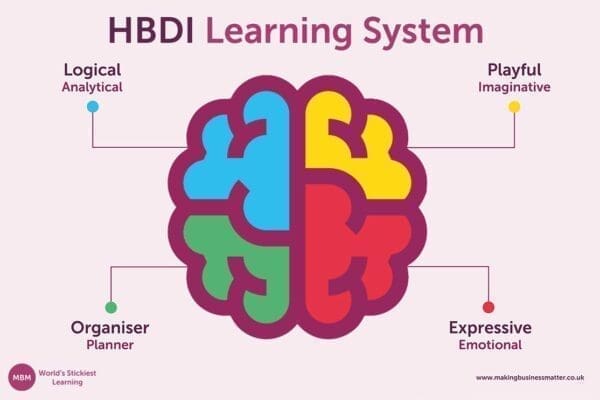
As a speaker, it is important to understand how people might react to the way you talk about different topics. If you heavily favour one of these styles, it may come across in your presentation. Moreover, it could cause friction with the audience without you meaning to.
For more detail, read our article on applying HBDI to presentations.
#2- Useful Techniques
Throughout this article, the skills in presenting covered have been about content, design, the type of medium to use, and how to use it. Now comes the most important part, the actual delivery of your presentation. These are the things you need to be practising over and over. Try to watch out for them in your recordings. Mastering these techniques will make you look comfortable, and ensure you deliver an effective presentation.
1. Friendly Faces
Most presenters will pick one friendly face in the room and talk to that person. This can help at first to calm your nerves. However, for that person, it can become awkward. Furthermore, the rest of the audience might feel left out. Make sure you start with a friendly face, but then give everyone eye contact as you look around.
Read our article on how to calm nerves before a presentation for more detail.
2. Eye Contact
If you struggle to make eye contact, the easiest tip is to divide the room into thirds (left, middle, and right or front, middle, and back). Then move your head to look at each third one after another. When practising, get into the habit of engaging one of the three areas with your eyes as you move to each new section or slide. This creates an easy flow that your body gets used to. If eye contact makes you really uncomfortable, you can look at people’s noses instead, they won’t be able to tell the difference, but it may put you more at ease.
3. Tone of Voice
It is really important that you engage the audience with your voice. Deep breathing before you start can help steady your voice. Also using pauses can help build anticipation in the audience.
4. Body Language
Everyone wants a silver bullet here and honestly, there isn’t one. You need to move with a purpose (to point at something or change your focus). You need to record yourself and understand what you do with your arms and legs. If you know you fiddle, make sure you have nothing around to pick up. Make sure you don’t have coins in your pocket.
If you can focus on moving for a reason and using your hands to emphasise your words then you are on to a winning formula. Always remember that doing anything that might be a distraction once or twice is fine. It is only once it becomes repetitive that people will become distracted by it.
5. Pace
Listening to someone speaking too fast is not a pleasant experience for your audience. They will feel rushed and uncomfortable. Practising your speech beforehand can help you pace yourself. Being nervous naturally makes us talk faster. We want to get it over as quickly as possible! When you practice your speech, think about the section you are on at set times. Try to know where you should be in your presentation on the day.
8) How to Improve Presentation Skills
Presentation training should cover the main areas of a presentation in enough detail and give you time to practice those skills.
Content Creation:
- How to create a storyboard plan.
- What questions to ask to check content understanding in the audience.
- How to include a story.
- How to grab the audience’s attention.
Medium Creation:
- Understanding how to create a PowerPoint, Flip charts, Wallboards, etc.
- Time to practice these skills with relevant software or materials.
Delivery:
- Time to practice. It should be recorded. Watch it back gain feedback and then practice again.
Most good presentation skills courses will run over two separate days with a break in the middle. This allows you the time to create a final presentation to bring back to the group and gain further feedback on your skills. Without doing this you might not have embedded the skills, therefore, this second day is vital to help make the learning stick.
A good course is also likely to ask you to arrive with a presentation prepared on the first day. This is to set a benchmark of the starting point and for the trainer to understand how to alter the day for the delegates in the room.
Take a look at our presentation skills infographic below and find out how to improve your presentation skills.
Click the image for a higher resolution:
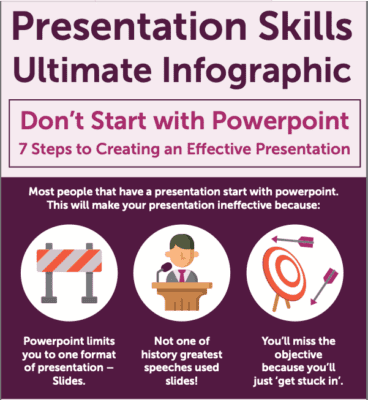
9) The Top Five Tips for Presenting:
Finally, let us look at the list of the top 5 presentation skills tips to take away for your journey to better presentations:
- Know your audience.
- Structure your presentation so that it flows well.
- Choose the best medium to deliver the best result.
- Breathe and use your pausing effectively.
- Practice makes perfect – practice at least 10 times but more if you are able.
Final Thoughts
Thinking back to my early days of having to talk in front of my class in school, I was terrified. I was very bad at making eye contact or projecting my voice loud enough to be heard. So when I moved into business and needed to get better at this, I chose the sink-or-swim approach. I took an opportunity to train a group of 9 people over a 5-week period, which was part of the job that I did at the time. For the whole of the first week, I was red in the face, very nervous, and uncomfortable.
But as I practised the skillset day in and day out, it got easier and easier. Now, I own a training business and deliver to large and small groups of people within all levels of organisations. Like any skill set, you need to practice to make it work.
This Skill Will Change Your Life – It Has Mine
Skills for giving effective presentations are so important for helping us move through life, gaining the best opportunity, and showing the best of ourselves. Even if you don’t regularly need to talk in front of groups, it is a skill that will help in many aspects of your work and personal life.
From feeling more confident to be ready to say ‘yes’ when the opportunity presents itself, these skills will help you grow. Knowing how to give a good presentation and having good communication skills should be life skills everyone develops. In the wise words of Richard Branson:
If somebody offers you an amazing opportunity but you are not sure you can do it, say yes – then learn how to do it later!”
You need to be ready to have the conversation and put yourself forward.
10) Further Reading and Resources on Presentation Skills
You can find further insight, detailed definitions, and clarification of all the key relevant terms mentioned in this guide in our Glossary for giving good presentations.
#1- Quotes
‘No audience ever complained about a presentation or speech being too short.’ – Stephen Keague
‘[The] best way to conquer stage fright is to know what you’re talking about.’ – Michael H Mescon
#2- Books All About Presenting
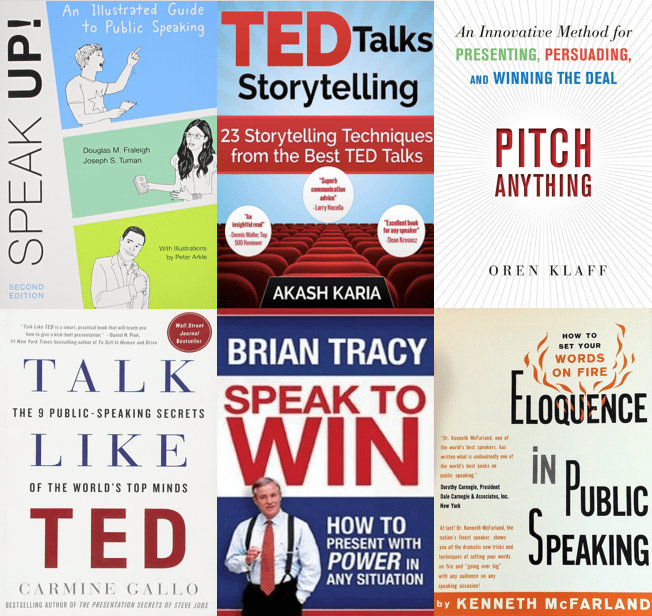
So many amazing authors and speakers have given their tips on presenting and dealing with nerves. I have included my favourite books below:
- ‘Speak Up!: An Illustrated Guide to Public Speaking‘ by Douglas M Fraleigh and Joseph S. Tuman. This is an illustrated introduction to public speaking and presentations.
- ‘TED Talks Storytelling: 23 Storytelling Techniques from the Best TED Talks’ by Akash Karia. This will give you an insight into how to best use stories to engage your audience.
- ‘Pitch Anything: An Innovative Method for Presenting, Persuading, and Winning the Deal’ by Oren Klaff. An Investment banker now Author with over $400 million won in deals shares his secret winning formula.
- ‘Talk Like TED: The 9 Public-Speaking Secrets of the World’s Top Minds’ by Carmine Gallo. All the research shows the 9 points that make any presentation successful.
- ‘Speak to Win: How to Present with Power in Any Situation’ by Brian Tracy. This is a book of solid advice for newcomers to the world of presenting.
- ‘Eloquence In Public Speaking’ by Dr Kenneth McFarland. This is a dated book but the lessons learnt are so relevant and well-taught that it is well worth a read.
#3- Free Download
Click the image to access our ’10 Top Tips for How to Present Persuasively’:
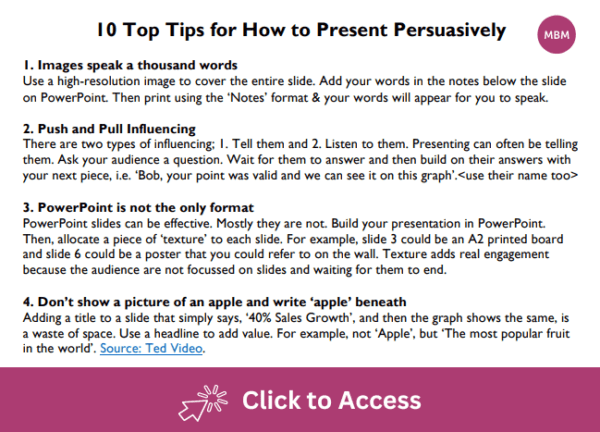
#4- Must-watch Videos
Watch our playlist from our YouTube channel for effective presentation skills tips. Click the video below:
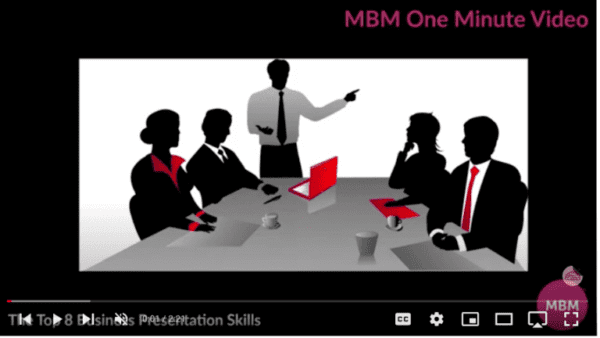
Chris Anderson, a TED Talks presentation skills curator, explains the secret to a TED Talk. The ability to place an idea or thought in a listener’s mind. It’s a very interesting concept:
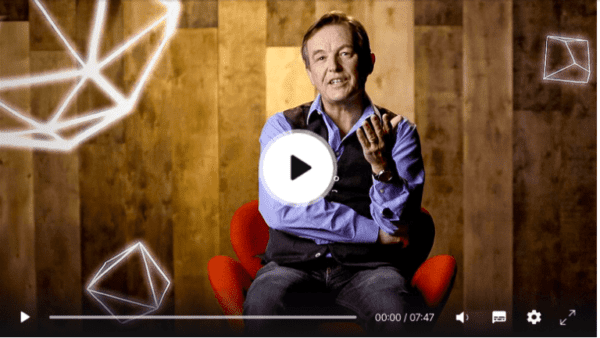
#5- Relevant Articles You May Like:
- Presentation skills examples.
- Must-know presentation tricks.
- Do your online presentations lack oomph?
- All about virtual presentations.
- Here’s how to start presenting with impact.
#6- Contact Us
Lastly, feel free to get in touch to find out how our presentation training can help you. Simply visit our contact us page or email us at helpme@makingbusinessmatter.co.uk, and we will be happy to get back to you.
Remember, you are the presentation, not the slides.
– Darren A. Smith.


